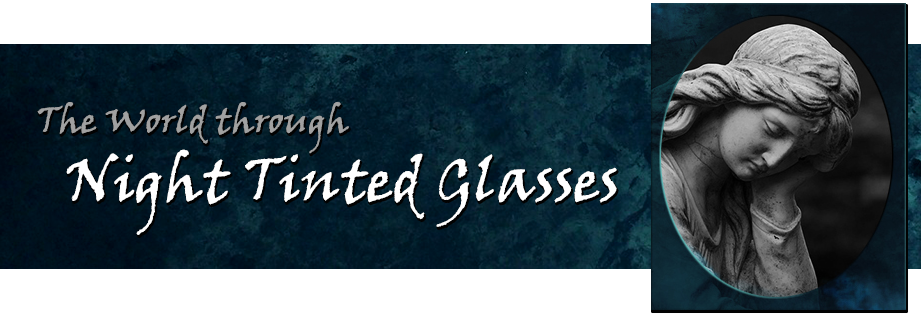 Vampires are everywhere, and a staple of the genre is the human/vampire romance. Nor am I complaining! The eroticism of the whole idea clearly strikes a chord in many a distracted audience member (yours truly included). Bill and Sookie on True Blood. Edward and Bella in Twilight. The looming triangle in The Vampire Diaries. Henry and Vicky from Blood Ties. The list goes on and on.
Vampires are everywhere, and a staple of the genre is the human/vampire romance. Nor am I complaining! The eroticism of the whole idea clearly strikes a chord in many a distracted audience member (yours truly included). Bill and Sookie on True Blood. Edward and Bella in Twilight. The looming triangle in The Vampire Diaries. Henry and Vicky from Blood Ties. The list goes on and on.But isn't something missing? Or someone?
What about a love story between a human man and a vampire woman? I mentioned this to a good friend on Thanksgiving. Her response managed to intrigue and disturb. "But it is bound to come up," she said, "that the gal can beat him up." Now let us take that apart for a moment. I've been involved romantically more than a few times. Which of us would be able to physically assault the other successfully never
 seems to have come up in conversation. Never that I can recall, anyway. In response to this, my friend confirmed such had never been an issue in her relationships either.
seems to have come up in conversation. Never that I can recall, anyway. In response to this, my friend confirmed such had never been an issue in her relationships either.So why bring it up?
Methinks this has something to do with the notion that be a vampire's lover is in some sense to be a victim, or at least submissive. Male submission is pretty much taboo in our culture -- all the more reason to dip one's toe in those waters, so say I! But then, I also really loved the movie Mishima (check it out, the flick is awesome).
On the other hand must a love story be about any other kind of submission than that to the passion itself? When I think on many of the real wonderful romances of film and literature--from Romeo and Juliet to The English Patient and even A Mighty Wind--relatively few involve submission, overt or covert. Others, such as The Lover and The Secretary, do and do so very well.
Methinks this might be the natural direction for vampire love stories to go. More, to some extent it already is headed there. Consider the underage "couple" at the heart of Let The Right One
 In, or the adorable pair that are Hoyt and Jessica on True Blood. Nor is this some kind of "modern" idea, as anyone who saw Son of Dracula with Lon Chaney Jr. can attest. Ditto the first filmed sequel to Bram Stoker's famous novel -- said novel itself including an act of near seduction between Lucy Westenra and her still-breathing fiancee, Lord Godalming. Fans of Dark Shadows might also recall Angelique Collins and her "harem" of handsome young men with fang-marks on their throats (at least until she finally bit the love of her life). The first film inspired by the series included an undead Carolyn in nightgown very diaphanous summoning an eager Chris (or was it Tom?) Jennings to her arms.
In, or the adorable pair that are Hoyt and Jessica on True Blood. Nor is this some kind of "modern" idea, as anyone who saw Son of Dracula with Lon Chaney Jr. can attest. Ditto the first filmed sequel to Bram Stoker's famous novel -- said novel itself including an act of near seduction between Lucy Westenra and her still-breathing fiancee, Lord Godalming. Fans of Dark Shadows might also recall Angelique Collins and her "harem" of handsome young men with fang-marks on their throats (at least until she finally bit the love of her life). The first film inspired by the series included an undead Carolyn in nightgown very diaphanous summoning an eager Chris (or was it Tom?) Jennings to her arms.But things, including story ideas, go in cycles and maybe we're approaching a time for the vampire woman and her male lover/victim. Lord knows there are many a story possibility inherent in the idea.
 Towards that end, consider this bit of photo manipulation and the alternate (fictional) history it might represent...heh heh heh...
Towards that end, consider this bit of photo manipulation and the alternate (fictional) history it might represent...heh heh heh...




















